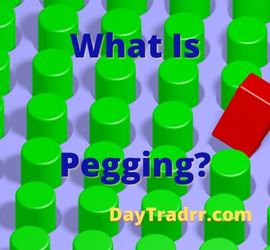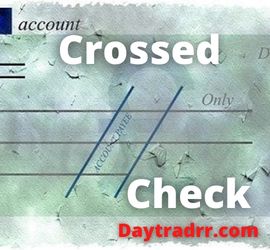What Is Principal Curtailment?
 Principal curtailment for a mortgage or loan refers to making extra payments or paying periodic lump sums towards debt to pay it off faster. The additional payments are applied to the principal balance on the loan. The more extra payments you make, the faster the principal balance on the mortgage reduces. This helps you save a lot of money in interest payments over the life of the loan.
Principal curtailment for a mortgage or loan refers to making extra payments or paying periodic lump sums towards debt to pay it off faster. The additional payments are applied to the principal balance on the loan. The more extra payments you make, the faster the principal balance on the mortgage reduces. This helps you save a lot of money in interest payments over the life of the loan.
In general, curtailment means to restrict or reduce something, to cut it short, or to finish early. The word can be seen in business announcements where curtailment where a restriction is imposed on any activity. This restriction can be temporary or permanent. The word is often used to describe reductions in production and limits on energy output or delivery.
However, principal curtailment has a slightly different meaning in the mortgage industry. A mortgage loan may be satisfied by curtailment when the homeowner pays off the balance ahead of schedule. Borrowers can make an extra payment against the principal amount owed in order to reduce the outstanding balance. This is called a partial curtailment. A total mortgage curtailment occurs when the balance of the loan is paid off with a lump sum ahead of schedule.
Mortgage Principal Curtailment vs Business Curtailment
Mortgage principal curtailment is a banker-speak for saying that you owe less on your home loan. Principal curtailment happens when you pay extra every month or if you occasionally make large principal payments on your mortgage. Curtailments can also happen as part of a loan modification. Usually, this occurs when the terms of your loan change to make it easier for you to pay. Mortgage curtailments can also happen to correct lender errors, accounting errors, or closing irregularities.
Business Curtailment
The word curtailment can be applied to a deliberate restriction or reduction placed on any activity. The term is used in a variety of business operations. For example, a company may impose a curtailment on production in response to short-term market conditions. This is particularly common in the oil and gas industry and for electricity suppliers. Each must quickly respond to changes in supply and demand. A company may curtail some of its business activities in response to financial troubles. As a result, it may shut down part of its operation temporarily or permanently in order to reduce expenses and conserve capital.
The word curtailment is also commonly used by energy companies. The term describes a reduction in deliveries to customers due to a shortage or reduction in demand. However, consumers are most likely to come across the word in their mortgage contracts.
Principal Curtailment on a Fannie Mae Mortgage
A principal curtailment is the application of funds used to reduce the unpaid principal balance of the mortgage loan. Fannie Mae permits curtailments for the following reasons:
- The lender may apply a curtailment to refund the overpayment of fees or charges paid by the borrower. It can be for any amount but in accordance with applicable regulatory requirements.
- If the borrower receives more cashback than is permitted for limited cash-out refinances. In this case, the lender can apply a curtailment to reduce the amount of cash back to the borrower. The purpose is to bring the loan into compliance with the maximum cash-back requirement. The maximum amount of the curtailment cannot exceed the lesser of $2,500 or 2% of the original loan amount for the subject loan. For example, if the borrower received $3,500 cashback at closing on a loan amount of $200,000, the lender could apply a $1,500 curtailment prior to delivery to Fannie Mae. This would result in “net cashback” to the borrower of $2,000, thus meeting Fannie Mae’s limited cash-out refinance requirement. (Source: fanniemae.com)
Lenders must apply these curtailments prior to delivery of the loan to Fannie Mae. Such curtailments may not be held until after whole loan delivery or for application in the month subsequent to issuance of an MBS.
Fannie Mae also allows additional principal payments remitted by a borrower to prepay the mortgage loan as permitted by the loan documents. All borrower-remitted curtailments received by the lender prior to delivery of the loan to Fannie Mae (or MBS issuance) must be applied prior to delivery and may not be held until after loan delivery or MBS issuance. Curtailments received after loan delivery must be applied in accordance with the Servicing Guide. (Source: ibid)
Principal Curtailment – 3 Ways to Payoff Your Mortgage Early
A principal curtailment is legal-speak for paying extra money in an effort to reduce the unpaid principal balance of the mortgage loan. The goal for the consumer is to save on total interest paid over the life of the loan, There are three common ways consumers can do this:
Paying Extra Every Month
One of the simplest ways to curtail your principal is to add a little bit of money to your monthly mortgage payment. In reality, you are paying more interest than principal for much of the life of your mortgage. Small amounts, even a little bit extra can make a real difference.
For example, if you have a $125,000, 30-year mortgage at 4.75 percent, your monthly payment is $652.06. Rounding it up to $700 saves almost 50 payments – taking more than four years off your loan’s life. Paying $752.06 gets the debt paid off in less than 23 years. Adding an extra $200 per month will turn your 30-year mortgage into one that spans only 18 years and four months. (Source: thenest.com)
Paying Periodic Lump Sums
Instead of paying extra every month, you can also curtail your mortgage’s principal balance by sending a large lump-sum payment when you have it. For instance, you may choose to use a bonus from work or a tax refund to reduce your mortgage balance. Doing this will get your mortgage paid off more quickly just like making larger-than-required monthly payments.
Loan Recasting
If you can afford to make a large payment of principal, your lender might let you recast your mortgage. Normally, when you pay your loan down, your calculated monthly payment doesn’t change. This is why extra payments make your loan pay off more quickly. When you recast your loan, though, the lender recalculates your payments based on your new, lower balance. This won’t shorten the time you spend paying your loan, but it will lower the monthly payments that you’ll have to make for its remaining life. (Source: ibid)
Example
Say you have a fixed-rate $200,000 mortgage at 4.25 percent. The monthly payment for principal and interest is $983.88 over 30 years. Add an additional $100 a month and the loan will be repaid in 300 months instead of 360.
The total interest cost of the loan will fall from $154,197 to $125,044.
Notice that the total interest cost for the mortgage declines by a little more than $29,000. However, the monthly payment stays the same. Since the homeowner is unlikely to hold the loan for 300 months (25 years), the benefit will come when the home is sold or the mortgage is refinanced because the homeowner will owe less to the lender. (Source: mymortgageinsider.com)
Principal Curtailment vs Refinancing
Principal curtailment differs from a refinance. With principal curtailment, the homeowner only pays off a small portion of the mortgage balance early. Refinancing involves the complete payoff of a mortgage, and a new loan is taken out to replace it. But a sometimes significant principal curtailment payment may be necessary before a homeowner can refinance. In mortgage refinancing, large principal curtailment payments may be required when borrowers haven’t built up much home equity. This happens because the early loan payments go toward interest and not principle. So, little progress is made toward reducing the actual principal balance.
Up Next: What Is an Absolute Auction?
 An absolute auction is where real or personal property is sold to the highest bidder regardless of price with no set minimum or reserve. It is a type of auction in which the sale is awarded to the highest bidder. Absolute auctions do not have a reserve price, which sets a minimum required bid for the item to be sold. The purchase amount is neither set nor negotiated. Instead, the purchase amount comes through competitive, open bidding, with the highest price as the winning bid.
An absolute auction is where real or personal property is sold to the highest bidder regardless of price with no set minimum or reserve. It is a type of auction in which the sale is awarded to the highest bidder. Absolute auctions do not have a reserve price, which sets a minimum required bid for the item to be sold. The purchase amount is neither set nor negotiated. Instead, the purchase amount comes through competitive, open bidding, with the highest price as the winning bid.
The sale goes to the last, highest, and best bidder, regardless of price. This type of auction typically produces the most urgency and excitement among bidders. The goal is to generate more interest, greater attendance, and ultimately produce higher bidding. Ideal situations for absolute auctions can include properties in high demand and those with no mortgages or liens. Foreclosed properties are often sold via an absolute auction. Potential buyers can find out from the mortgage holder, often a bank, what type of auction will be held. For example, if the property will be sold at an absolute auction or by a lender confirmation auction. Farm equipment and machinery are the kinds of items that are often sold at an absolute auction.




